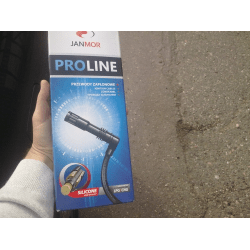
Daihatsu YRV 2001 Overview
DAIHATSU was once the king of tiny babies. Prior to the onslaught of Korean automakers, it was the top-selling Charade, the successful Feroza XNUMXxXNUMX, and the top-selling Applause sedan.
But when those cars disappeared from the showrooms and the Koreans stormed in with cheaper, fancier cars, Daihatsu's business went downhill. Within two years, he drove with a three-car line, a budget Cuore, a cute little Sirion hatchback, and a Terios toy SUV, and sales dropped from over 30,000 in 1990 in the early 5000s. to just over XNUMX last year.
But the past year has been a busy one for the automaker, which still calls itself "Japan's major small car company." Toyota Australia took over the day-to-day management of local operations, giving Daihatsu access to previously unavailable administrative resources. The company has already updated the Cuore and Sirion, including adding a powerful version of the GTVi, and sales are up slightly.
But the Daihatsu vehicle being hunted down is the quirky-looking YRV mini station wagon, which they believe adds a new dimension to their lineup. Australians didn't like the small boxy runabouts dotted around Tokyo's crowded streets, and the quality but clunky-looking Suzuki Wagon R+ and tiny Daihatsu Move disappeared from showrooms after disappointing results.
But the YRV can change that simply with its beautiful wedge-shaped hull and long list of standard amenities and safety features. Daihatsu says the designers knew the YRV's competitors lacked style, so they focused on giving the car a distinctive look that would appeal to outside of Japan. This year, the company announced its intentions by launching a production version at a designer boutique in Geneva.
The car's most distinctive feature is the double-wedge windows that accentuate the theater-style seating inside. The car is powered by Sirion's 1.3-liter four-cylinder engine, which Daihatsu says is the most powerful powertrain in its class.
It features variable intake valve timing to increase maximum power and improve fuel economy, as well as low torque to reduce exhaust emissions. The engine develops 64 kW at 6000 rpm and 120 Nm at a fairly low 3200 rpm.
The front-wheel-drive car comes with a five-speed manual transmission as standard, but there's also an F1-style automatic shifter with steering wheel buttons to shift up and down and a digital indicator screen inside the instrument dials.
Daihatsu says safety is a key aspect of the YRV's design, and it has built-in crumple zones, standard driver and passenger airbags, and pretensioner seat belts. In the event of an accident, the doors are automatically unlocked, the interior lights and alarms are turned on, and the fuel supply is cut off to reduce the risk of fire.
The YRV comes standard with air conditioning, a four-speaker audio system, power steering, power windows and mirrors, central locking and engine immobilizer.
Driving
This car has great potential. On paper, the performance numbers and standard features look great - until you see the price. YRV is a small city boat loaded with gear. But its high price means it will compete with models like the Ford Lasers and Holden Astras, which have more space, more powerful engines and are world-class quality cars.
Compared to its natural competitors, the YRV's wedge-shaped body is one of the most attractive in its class. Its interior is modern and inviting, but the golf ball-shaped dimpled dashboard is made of hard plastic that doesn't hold up to scrutiny these days, even when compared to cheaper rivals.
The instruments are easy to read, but the CD sound system has more buttons than an airliner's cockpit, and there's a blind hole between the vents where something should obviously go. The rear seats are 75 mm higher than the front.
The seats are relatively comfortable and there is plenty of legroom for the front passenger, and the driver's seat adjusts well for a comfortable driving position. Mechanically, the YRV is a bit disappointing given Daihatsu's partnership with Toyota.
The engine isn't outstanding, but it's arguably the car's best mechanical feature. It is reasonably quiet under normal driving conditions and revs smoothly and freely thanks to variable valve timing. On the other hand, even a week of city driving with frequent stops resulted in a reasonable fuel consumption of just over seven liters per 100 km.
The four-speed automatic in our test car shifted relatively smoothly, but the standard five-speed manual transmission made the most of the underpowered engine. Steering wheel-mounted shift buttons are a gimmick in a car like this, and once the novelty wears off, you're unlikely to use them again.
The suspension feels great on perfect-quality asphalt roads, but the slightest bumps will make their way through the cabin on something other than the smoothness of a pool table. Handling is nothing special, and there's plenty of body roll, fuzzy steering, and front-end push as the tires flip over on their own as they rush through the twisty stuff.
The bottom line
2/5 Good appearance, headroom. An overpriced small car with poor performance, especially considering Daihatsu's previous record.
Daihatsu YRV
Price in test: $19,790
Engine: 1.3-liter four-cylinder with two overhead camshafts, variable valve timing and fuel injection system.
Power: 64 kW at 6000 rpm.
Torque: 120 Nm @ 3200 rpm.
Transmission: four-speed automatic, front-wheel drive
Body: five-door hatch
Dimensions: length: 3765 mm, width: 1620 mm, height: 1550 mm, wheelbase: 2355 mm, track 1380 mm/1365 mm front/rear
Weight: 880kg
Fuel tank: 40 liters
Fuel consumption: 7.8 l/100 km average on test
Steering: power rack and pinion
Suspension: Front MacPherson struts and semi-independent torsion beam with coil springs.
Brakes: front disc and rear drum
Wheels: 5.5×14 steel
Tires: 165/65 R14
